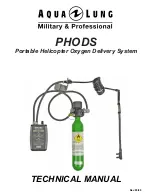
6240B DC Voltage Current Source/Monitor Operation Manual
3.2 Battery Charge and Discharge Test
3-3
3.2
Battery Charge and Discharge Test
This section describes an example of charge and discharge test of a rechargeable battery such as NiCad bat-
teries and nickel hydride batteries.
The charge and discharge test takes a long time and should be executed by a system via remote control. How-
ever, a manual operation example is described here to show how to use the functions of the 6240B.
The battery is charged with DC constant current and voltage, and is stopped charging when the charge current
reaches the specified current or below.
It is discharged with pulse constant current, and is stopped discharging when the battery voltage reaches the
specified voltage or blow. The voltage limit values are set to the same polarity, and the HL value is set as
upper charge limit and the LL value as lower discharge limit to avoid overcharge or overdischarge.
Setting the suspend voltage to the same voltage as the battery, HiZ can reduce transient current during Oper-
ate status.
The discharged voltage is stored in the memory and is read out after the test is complete.
However, the memory can only store 8000 data items. Even if the limit is exceeded, discharge continues but
data is not stored.
In this case, up to 8000 seconds (2.22 hours) worth of data can be stored.
CAUTION:
1.
Use 4-wire connection for accurate voltage measurement.
2.
Be careful when setting the source value and the limit values so that excessive voltage or current is not applied
against the rated voltage or capacity of the battery.
















































